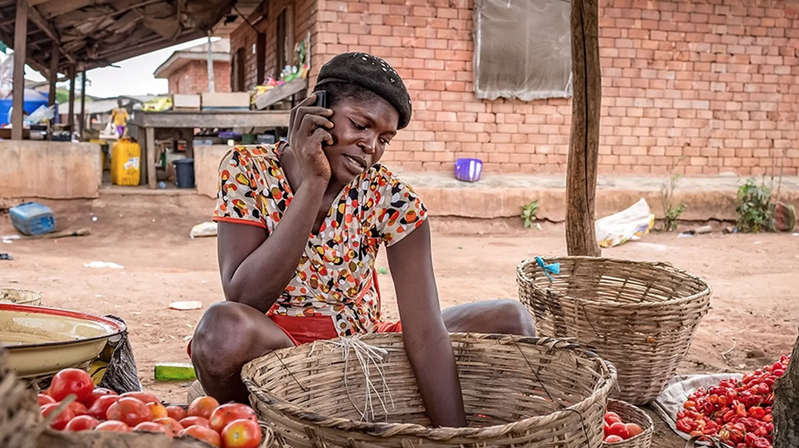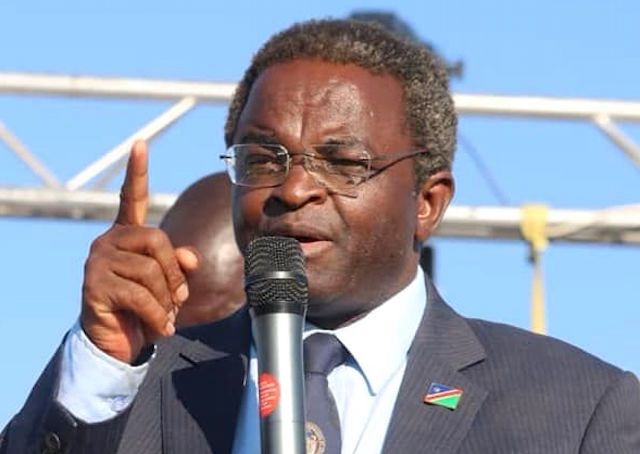Meet Claire Sibthorpe
In a recent chat with Claire Sibthorpe, head of digital inclusion in the Mobile for Development (M4D) team at Groupe Speciale Mobile Association (GSMA), I gleaned insight into bridging what GSMA dubs “the mobile gender gap” in Sub-Saharan Africa.
GSMA is a global organisation that represents the interests of mobile operators and the broader mobile industry worldwide.
At GSMA, Sibthorpe leads programmes focused on accelerating digital inclusion for underserved societies in low and middle-income countries, not least women. Notably, she leads the Women in the Digital Economy Fund (WiDEF) co-managed by GSMA, Cooperative for Assistance and Relief Everywhere (CARE), and the US Department of Defense’s General Defense Intelligence Programme (GDIP). This fund seeks to identify, support, and scale evidence-based solutions to close the gender digital divide.
25-year retrospective
Reflecting on her 25-year career in advancing ICT policy and practise for public, private, and international development organisations, Sibthorpe highlights three core pillars of her work: inclusion, impact, and diversity – with inclusion being paramount.
Starting her journey in Hanoi, Vietnam, where she worked on a national IT strategy funded by the Canadian government in the late 1990s, Sibthorpe learnt early on the necessity of integrating a social scientist’s perspective into technology development. Back then, the tech field was dominated by a “build it and they will come” mentality, often led by technocrats disconnected from the realities they aimed to address, frequently missing the mark on the needs of underserved communities.
Despite the evolution of technology since her first job – when cellphones and portable devices were significantly less widespread – Sibthorpe asserts that technological progress alone isn’t enough. It must be paired with a human-centred approach to ensure meaningful digital inclusion.
All about that data
A critical takeaway from Sibthorpe’s experience is the crucial role of data. Early in her career, the lack of granular data on underserved populations hindered effective action. Today, while there’s broad consensus on the importance of continuous, detailed data-collection to understand barriers to digital inclusion, measure the gender gap, and inform targeted actions and policies, significant data gaps remain.
Sibthorpe urges a shift in perception, especially in Africa. While many assume widespread mobile connectivity, significant gaps persist due to factors like affordability, digital literacy, and relevance. Addressing these barriers requires informed, targeted actions to ensure everyone, particularly women and other underserved groups, can benefit from digital advancements.
In the ensuing column hijack, Sibthorpe underscores that bridging the mobile gender gap in Sub-Saharan Africa demands a comprehensive and inclusive approach backed by robust data and multi-stakeholder collaboration.
Sibthorpe’s insights. In her words:
As I reflect on the digital-era we live in, where connectivity is a cornerstone of socio-economic development, I feel strongly that ensuring equitable access to mobile technology is more important than ever. Our latest GSMA Mobile Gender Gap Report underscores the progress we’ve made and the challenges that remain in closing the mobile gender gap. With more than 3.7 billion people in low and middle-income countries (LMICs) now accessing the internet via mobile devices, it is vital to address gender disparities in mobile connectivity.
Our Mobile Gender Gap Report offers some hopeful news: the mobile internet gender gap has decreased from 19% in 2022 to 15% in 2023, matching the progress seen in 2020. This progress is largely driven by women adopting mobile internet at a faster rate than men. Currently, over 1.5 billion women across LMICs use mobile internet. The fact the number of women using mobile internet continues to increase highlights the value they see in using the internet.
Between 2017 and 2020, we made significant strides in reducing the mobile internet gender gap. However, this progress stalled in 2021 and 2022 as women were disproportionately impacted by the economic crisis following the Covid-19 pandemic. The data we have now points to a recovery, but it also underscores the need for sustained efforts to keep this momentum going and further close the gender gaps.
Yet, despite these advancements, disparities persist. Women in LMICs are still 15% less likely than men to use mobile internet, with even larger gaps in South Asia (31%) and Sub-Saharan Africa (32%). In Sub-Saharan Africa, there are 55 million fewer women than men using mobile internet, and the gender gap in 2023 remains similar to that in 2017 (34%). These statistics are a stark reminder that we need targeted interventions to ensure women are not left behind in the digital world.
How the gender gap disadvantages women in Sub-Saharan Africa:
It is important to remember that across LMICs, mobile phones are often the primary – and sometimes only – means of accessing the internet. For women, this access is crucial. Mobile phones empower women, making them feel more connected, autonomous, and safer. They provide access to vital information and services, including healthcare, education, and financial services. This cannot be overlooked.
However, barriers such as affordability, particularly of handsets, literacy, and digital skills continue to hinder women’s access and use of mobile internet. For women, particularly those in rural areas or with disabilities, these barriers are exacerbated by social norms and structural inequalities. It can be difficult to see these barriers holding back so many women from reaching their full potential.
Addressing the mobile gender gap is not only a matter of equity, and the right thing to do, but also an economic necessity. Our analysis shows that closing the mobile gender gap holds the potential to contribute billions to the economies of LMICs and generate an estimated $230 billion (R4.1 trillion) in additional revenue to the mobile industry over eight years. Connectivity is also vital for achieving the UN Sustainable Development Goals.
It is an issue that we can’t afford to ignore any longer.
Here are some actionable steps for stakeholders

Ensure a focus on gender equality and digital inclusion for women: Policymakers and others need to prioritise gender equality in digital inclusion strategies. This includes setting specific gender equity targets. It’s time for concrete commitments and real change.
Improving gender-disaggregated data: This is crucial for understanding the mobile gender gap and tailoring interventions. Stakeholders must invest in research to identify and address the specific needs of women in different contexts. Knowledge is power, and better data will empower us to make more effective decisions.
Address women’s needs and the barriers they face: Stakeholders should design and implement products, services, policies, and interventions that explicitly consider women’s needs and address the barriers they face including those related to affordability, knowledge and skills, relevance, access and safety and security concerns. We need solutions that work for women, not just in theory, but in their everyday lives.
Collaborative action involving governments, industry players, non-profits, and international organisations is essential. The digital gender gap is driven by a complex set of social, economic, and cultural factors that cannot be addressed by one organisation alone. Partnerships can help pool resources, share knowledge, and scale successful initiatives. -IOL
*Andile Masuku is co-founder and executive producer of African Tech Roundup. Connect and engage with Andile on X (@MasukuAndile) and via LinkedIn.
Stay informed with The Namibian – your source for credible journalism. Get in-depth reporting and opinions for
only N$85 a month. Invest in journalism, invest in democracy –
Subscribe Now!










